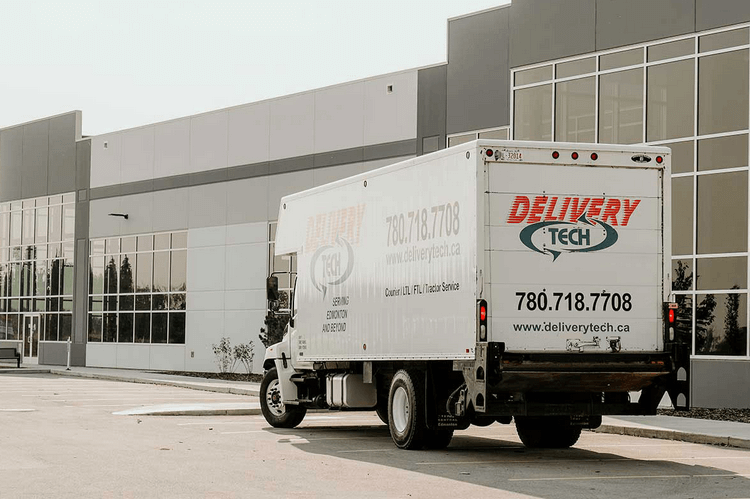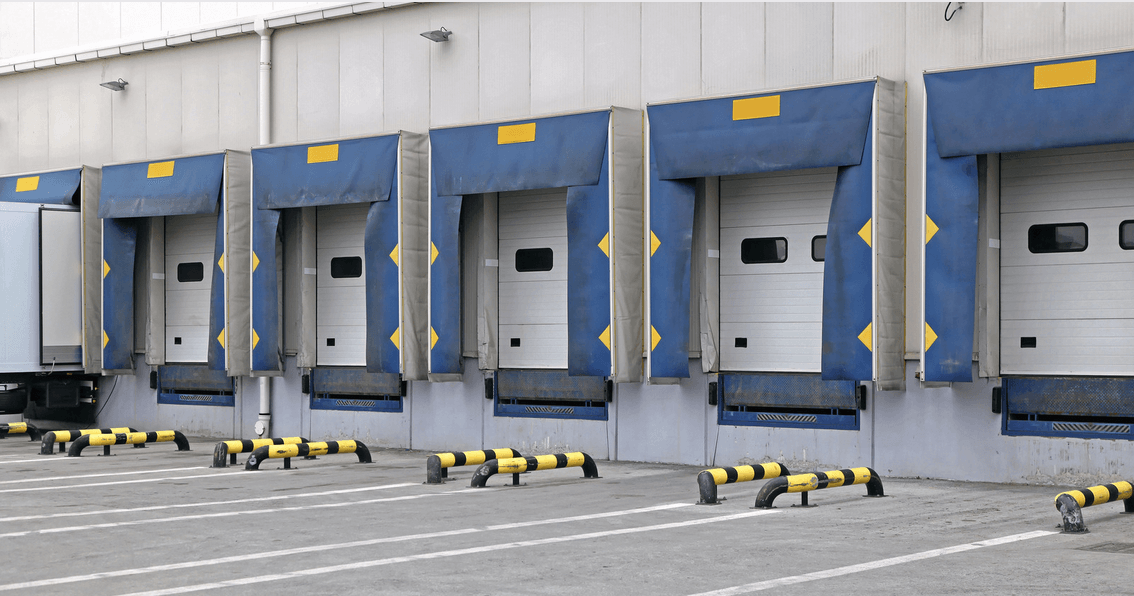
Streamlining Delivery and Logistics with Cross-Docking and Final Mile Services
In today's world, getting things from one place to another fast and without a fuss is more important than ever. Whether it's a pair of shoes you ordered online or a fresh batch of your favourite coffee beans, we all want our stuff delivered quickly and safely. But behind the scenes, ensuring your package arrives at your doorstep involves many steps and people. That's where the magic of cross-docking and final mile services comes in. Imagine cross-docking as a fast-paced relay race where your package is passed swiftly from one truck to another, skipping the long wait at a warehouse. And final mile service? It's the final sprint to the finish line, ensuring your package is delivered from the local hub to your front door quickly and carefully. These processes help make deliveries faster, reduce mistakes, and keep costs down - making both companies and customers happy. This article explores how integrating these approaches enhances operational efficiencies and significantly improves customer satisfaction, paving the way for a more dynamic and responsive business model in the face of changing market demands.
What is Cross-Docking?
In simple terms, cross-docking is a logistics strategy designed to minimize storage time in a warehouse by transferring goods directly from incoming to outgoing vehicles. This process eliminates the need for long-term storage, reducing inventory holding costs and expediting delivery. The cross-docking process begins when goods arrive at a cross-docking terminal's dock. They are immediately sorted and directly loaded onto outgoing delivery trucks or transportation modes, ready to be shipped to their final destination. Cross-docking can take various forms depending on the specific requirements of the supply chain:
- Manufacturing Cross-Docking: This involves receiving purchased and inbound products required for manufacturing. The warehouse may hold the items briefly until the manufacturing order is complete.
- Distributor Cross-Docking: Products from multiple suppliers are consolidated into a mixed product pallet and delivered to the customer when the final item is received.
- Retail Cross-Docking: Products received from multiple vendors are sorted and directly delivered to the appropriate retail stores.
- Opportunistic Cross-Docking: This happens when a company takes advantage of the cross-docking procedure to transfer a product directly from the receiving dock to the outbound shipping dock to meet a specific demand or order.
Cross-docking optimizes the supply chain through these variations, ensuring products move from supplier to end customer with minimal delay and efficiency.
Benefits of Cross-Docking
The benefits of implementing a cross-docking system are numerous, directly impacting operational efficiency, cost reduction, and customer satisfaction. Here are some key advantages:
- Reduced Inventory Costs: By minimizing the need for storage, companies can significantly lower their inventory holding costs, freeing up capital for other investments.
- Decreased Handling Costs: Fewer touchpoints in the shipping process mean reduced labour costs associated with sorting, packing, and storing goods.
- Enhanced Product Quality: Shorter storage times reduce the risk of damage and deterioration, ensuring products reach customers in optimal condition.
- Faster Delivery Times: Streamlining the transition from supplier to customer reduces delivery times, enhancing customer satisfaction.
- Increased Efficiency: Cross-docking simplifies the logistics chain, eliminating unnecessary steps and making the entire process more efficient.
- Environmental Benefits: Fewer storage requirements and reduced transportation distances can lead to lower energy consumption and carbon footprint, contributing to sustainability efforts.
Challenges in Cross-Docking
While cross-docking presents significant advantages, implementing this logistics strategy doesn't come without its challenges. One of the foremost obstacles is precise timing and coordination between transportation modes. If incoming goods do not align perfectly with outgoing transport schedules, it can lead to delays and increased costs rather than the intended efficiencies. Additionally, cross-docking requires a detailed understanding of the supply chain and robust technology systems to ensure accurate tracking and sorting of goods. This complexity can strain resources, particularly for smaller businesses with limited infrastructure. Another challenge involves the variability in the volume of goods; peak periods can overwhelm systems, while troughs can lead to underutilization of resources. Lastly, maintaining product quality during rapid transfers is crucial. Without adequate control measures, products are at risk of damage, leading to losses and dissatisfaction. Successfully navigating these challenges requires careful planning, investment in technology, and a flexible approach to logistics management.
When is Cross-Docking Used?

Cross-docking is particularly beneficial in specific scenarios where efficiency and speed are paramount. It is most effectively used when handling perishable goods that require immediate delivery to maintain freshness, such as food products or flowers. Retail sectors experiencing high turnover and demand for rapid replenishment, like fashion or electronics, also leverage cross-docking to ensure shelves are constantly stocked with the latest products. Furthermore, cross-docking proves invaluable during peak periods, such as the holiday season, when there is a surge in order volume, and quick turnaround is essential to meet consumer expectations. In logistics operations where reducing inventory holding costs is a priority, cross-docking is a strategic approach to keep goods moving swiftly through the supply chain, minimizing the need for extensive storage and reducing overall operational costs.
What is Final Mile Delivery?
Final mile delivery, also known aslast-mile delivery, represents the final step in the delivery process—the point at which goods finally reach their destination at the customer's doorstep. This phase is critical as it directly impacts customer satisfaction due to its significant influence on delivery speed, efficiency, and the condition in which goods arrive. In the vast logistics chain, final mile delivery is arguably the most visible and personal part of the process to the end consumer. Its effectiveness is vital for maintaining a positive brand image and customer loyalty.
The importance of final mile delivery has surged with e-commerce, as consumers now expect fast, reliable, and free delivery services. It acts as the defining touchpoint between the customer and the company, where the efficiency and quality of the delivery service can significantly influence the overall customer experience. Mistakes or delays in this phase can lead to dissatisfaction, damaging the company's reputation and possibly deterring future business. Conversely, a smooth, timely, and friendly final mile delivery can enhance customer satisfaction, encouraging repeat business and positive reviews. By optimizing the final mile delivery, companies can directly impact their competitive edge and customer retention rates in the competitive e-commerce landscape.
Improving Customer Experience with Final Mile Delivery
Improving customer experience with final mile delivery hinges on strategic enhancements to optimize delivery for superior service. Companies can adopt several strategies to achieve this:
- Use of Advanced Technology: Implementing state-of-the-art tracking systems enables the company and customers to monitor deliveries in real-time, fostering transparency and trust. Route optimization software can also ensure the most efficient paths are taken, reducing delivery times.
- Flexible Delivery Options: Providing customers the flexibility to choose delivery slots and locations or adjusting delivery details on the fly caters to the convenience they increasingly demand. This level of control significantly enhances customer satisfaction.
- Enhanced Communication: Keeping the lines of communication open with customers through timely updates about their delivery status, including any delays or changes, makes for a more informed and, thus, more satisfying experience.
- Investment in Customer Service: A dedicated support team for handling delivery inquiries and issues can make all the difference in managing customer expectations and resolving any concerns swiftly.
- Sustainable Delivery Practices: With growing environmental consciousness, eco-friendly delivery methods can positively impact brand perception and customer preference.
Companies can significantly improve the final mile delivery experience by focusing on these areas, leading to higher customer satisfaction and loyalty and ultimately driving business success in a competitive market.
Challenges with Final Mile Delivery
While crucial for enhancing customer satisfaction, the final mile delivery presents several challenges that companies must overcome. High costs are a primary concern, as the last mile is often the most expensive part of the shipping process due to the need for small parcel deliveries to individual locations, which is less efficient than bulk transportation to a central hub. Urban congestion poses another significant hurdle, with traffic delays leading to slower delivery times and increased carbon footprint. Additionally, customer availability and preferences can complicate deliveries—customers may not be home to receive orders, requiring re-delivery attempts that further inflate costs and inefficiencies. The growing customer demand for faster, even same-day deliveries puts additional pressure on logistics operations to perform efficiently without compromising service quality. Furthermore, final mile delivery faces the challenge of integrating advanced technologies for tracking and route optimization in a scalable and cost-effective way. Addressing these challenges requires innovative thinking and strategic investment in logistics optimization to ensure that the final step in the delivery process is as efficient, sustainable, and customer-friendly as possible.
Best Practices for Streamlining Delivery Services

Certain best practices can significantly enhance efficiency and reliability for businesses that leverage cross-docking and final mile delivery services to improve logistics and customer satisfaction. Here are strategies:
- Establish Strong Partnerships: It is vital to build relationships with dependable logistics and transportation partners. Look for partners who demonstrate the capacity and flexibility to adapt to varying volumes and are committed to timely and accurate service.
- Invest in Technology: A comprehensive logistics platform that integrates cross-docking and final mile delivery processes is essential. Technologies for real-time tracking, route optimization, and automated communication can drastically improve service reliability and customer experience.
- Optimize Logistics Planning: Syncing shipping and receiving schedules to minimize wait times and ensure swift goods transitions requires meticulous planning. Invest in skilled logistics planners and leverage predictive analytics to forecast and mitigate delays.
- Enhance Training and Quality Control: Logistics staff should be well-trained in best practices for cross-docking and final mile delivery, including handling goods with care and maximizing speed and efficiency in processing. Regular audits and feedback loops help maintain standards.
- Customer-Centric Approach: Tailor delivery options to meet customer preferences for more personalized service. Offer choices in delivery timing, locations, and even packaging to enhance the customer experience.
- Sustainability Practices: Incorporate eco-friendly practices in your logistics operations. This can include optimizing routes to reduce fuel consumption and encouraging recycling in packaging.
- Regular Performance Review: Continuously evaluate the performance of your cross-docking and final mile delivery operations against set KPIs. Use customer feedback, delivery success rates, and time metrics as benchmarks for improvement.
By following these best practices, businesses can streamline their delivery services, optimize operations, and provide exceptional customer experiences, setting themselves apart in a highly competitive market.
Conclusion
Enhancing the efficiency and satisfaction of final mile delivery is pivotal for businesses in today’s fast-paced, customer-centric market. Key strategies involve using advanced technology for tracking and route optimization, offering flexible delivery options to cater to customer convenience, maintaining effective communication, investing in customer service, and adopting sustainable delivery practices. Challenges such as high costs, urban congestion, and customer availability require innovative solutions and strategic investments in logistics optimization. Additionally, best practices like establishing strong partnerships, investing in technology, optimizing logistics planning, enhancing training and quality control, adopting a customer-centric approach, incorporating sustainability practices, and regularly reviewing performance can significantly improve logistics operations. By focusing on these key areas, companies can achieve more efficient, sustainable, and customer-friendly final mile delivery experiences, fostering greater customer satisfaction and loyalty and securing a competitive edge in the market.
Delivery Tech in Edmonton, Alberta, excels in providing dependable delivery services. Allow us to enhance your delivery efficiency and support your operational excellence. Visit our Contact Page to request a quote tailored to your business needs.

